Welcome to the Blue Birds of Kentucky! Our Free Photo Guide is designed to help both novice and experienced birdwatchers identify and appreciate the diverse range of blue birds found in the Bluegrass State.
From the bright blue plumage of the Eastern Bluebird to the iridescent hues of the Indigo Bunting, this guide will provide you with high-quality photographs and useful information to help you identify these beautiful blue birds in their natural habitat. Let’s embark on a journey to explore the vibrant world of Kentucky’s blue birds together!
Blue Birds Found In Kentucky
The diverse geography of Kentucky, combined with its temperate climate and variety of habitats – from dense forests and wetlands to open fields and rivers – makes it an ideal location for a wide range of maps of bird species, including several types of bluebirds.
The different elevations and landscapes provide unique niches and food sources that attract various bird species, contributing to the state’s rich avian biodiversity. This variety of habitats is what makes Kentucky a haven for birdwatchers and nature enthusiasts alike.
Eastern Bluebird
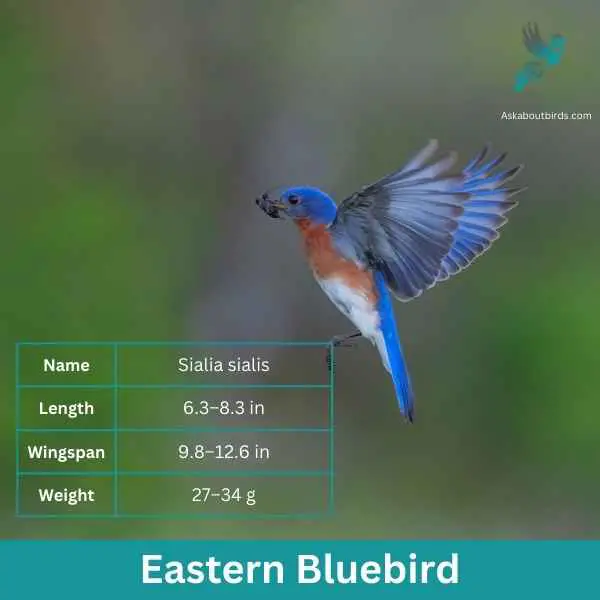
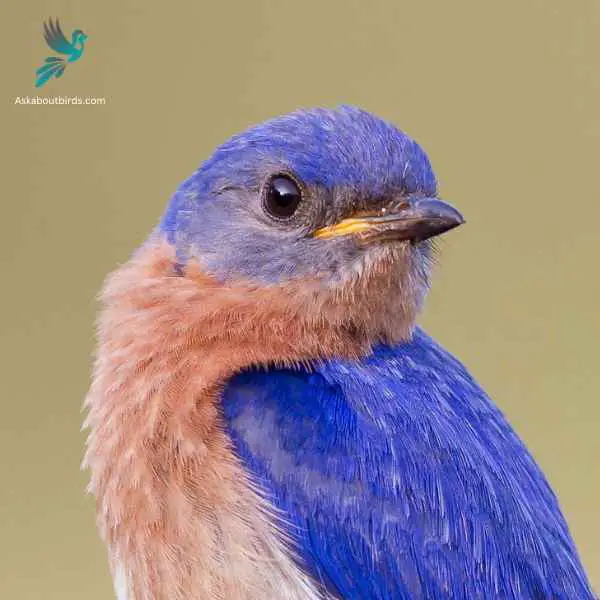
| Feature | Measurement |
|---|---|
| Scientific Name | Sialia sialis |
| Length | 6.3–8.3 in |
| Wingspan | 9.8–12.6 in |
| Weight | 27–34 g |
The Eastern Bluebird (Sialia sialis) is a small thrush found in open woodlands, farmlands, and orchards, and is recognized for its vibrant blue and red coloration. Male Eastern Bluebirds are dazzling with bright blue upperparts and a rusty or brick-red throat and breast, while females, though less colorful, still offer a similar pattern. The bird is native to North America and is commonly seen east of the Rockies, from Canada to the Gulf States and southeastern Arizona to Nicaragua.
Eastern Bluebirds feed on insects, wild fruit and berries. They have a gentle nature and are often seen perched alone or in small groups in the open, scanning the ground for prey. They are cavity nesters and will use old woodpecker holes or birdhouses if they are the right size.
Indigo Bunting


| Feature | Measurement |
|---|---|
| Scientific Name | Passerina cyanea |
| Length | 4.5–5.1 in |
| Wingspan | 7.1–9.1 in |
| Weight | 11.2–21.4 g |
The Indigo Bunting is a strikingly vibrant songbird, often hailed for its brilliant blue plumage and melodic song that graces woodlands and meadows during the warmer months.
Appearance: Males are renowned for their bright indigo blue feathers, which can appear darker in certain lights. Females and juveniles, on the other hand, are brown with subtle hints of blue on their wings and tail. The species lacks the vibrant streaking or spotting commonly found in many other songbirds.
Diet: Indigo Buntings primarily subsist on seeds, especially during non-breeding seasons. During the breeding season, they also consume a variety of insects such as beetles, caterpillars, and spiders, providing essential protein for their growing chicks.
Reproduction: Indigo Buntings build their nests close to the ground in shrubs or low tree branches. These nests, crafted meticulously with grasses and other plant materials, cradle clutches of typically 3 to 4 eggs. After hatching, the young are fed by both parents until they’re ready to fledge.
Blue Grosbeak
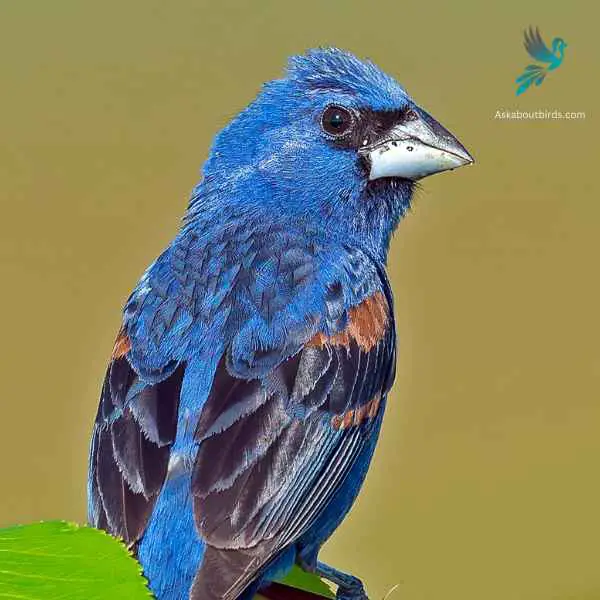

| Feature | Measurement |
|---|---|
| Scientific Name | Passerina caerulea |
| Length | 5.5 to 7.5 in |
| Wingspan | 10 to 11 in |
| Weight | 26 to 31.5 g |
The Blue Grosbeak is a medium-sized songbird found in North and Central America. The male Blue Grosbeak displays stunning plumage with deep blue feathers on its body and head, while the female has more subdued brownish tones. Both sexes have a thick, conical bill, which gives them their name “grosbeak,” meaning large beak.
These birds prefer open habitats such as grasslands, brushy areas, and woodland edges. Blue Grosbeaks are known for their melodious songs, which consist of a series of rich and varied notes. They primarily feed on seeds and insects, using their strong beaks to crack open seeds and forage on the ground or in low vegetation.
Cerulean Warbler
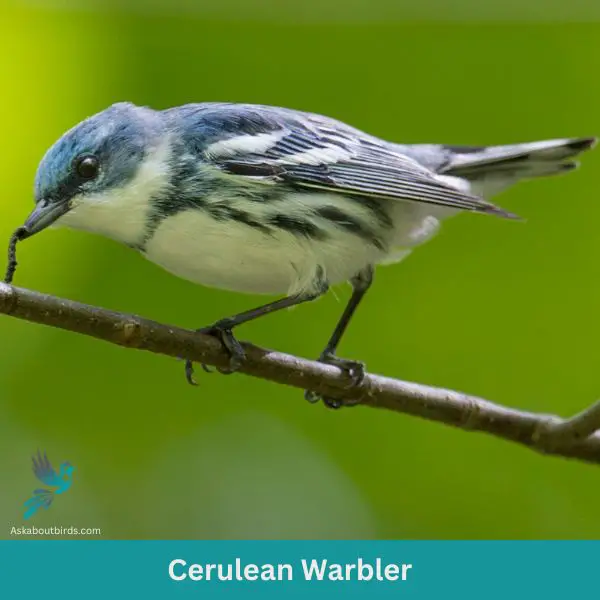
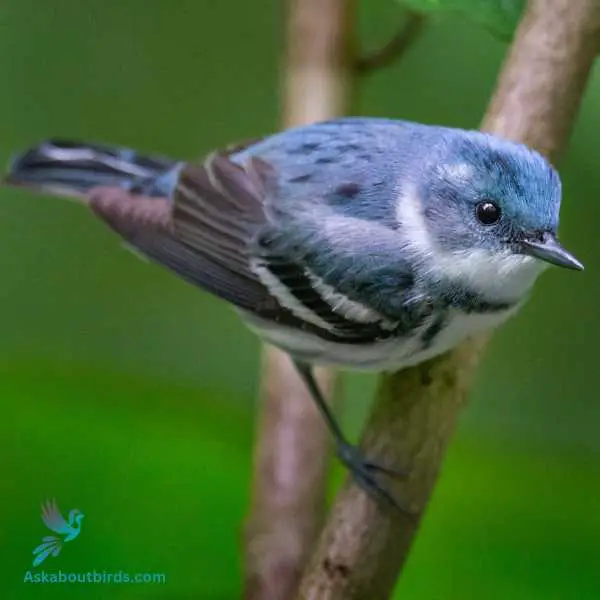
| Trait | Cerulean Warbler |
|---|---|
| Scientific Name | Setophaga cerulea |
| Length | 4.5 inches |
| Wingspan | 7.9-8.7 inches |
| Weight | 0.3-0.4 ounces |
The Cerulean Warbler is a striking songbird known for its sky-blue plumage and flitting movements in the forest canopy.
Appearance: Males boast a vibrant cerulean blue color on their upperparts, with streaked underparts, and a black necklace. Females have a more subdued bluish-green hue and lack the prominent black markings seen in males.
Diet: The diet of the Cerulean Warbler is predominantly made up of insects and spiders. They actively forage high in the treetops, gracefully maneuvering through leaves and branches.
Reproduction: Cerulean Warblers nest in the upper branches of tall deciduous trees. The female weaves a shallow cup-shaped nest and lays a clutch of 3-5 eggs.
Blue Jay

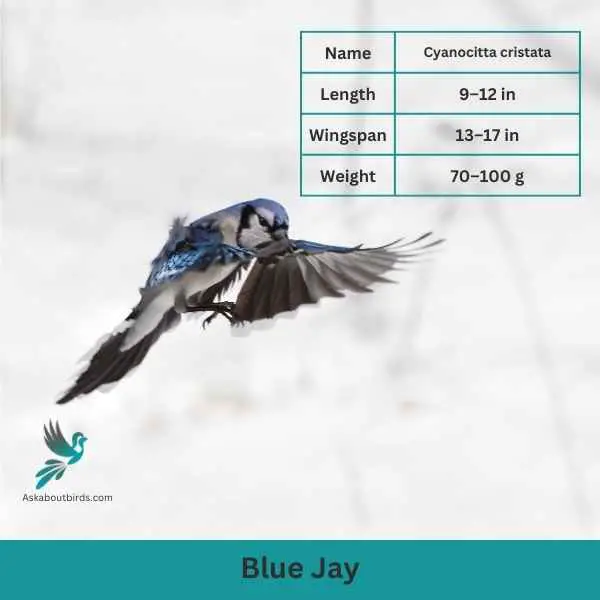
| Feature | Measurement |
|---|---|
| Scientific Name | Cyanocitta cristata |
| Length | 9–12 in |
| Wingspan | 13–17 in |
| Weight | 70–100 g |
The Blue Jay is a vibrant and easily recognized bird, known for its intelligence, distinctive calls, and bold behavior, commonly found throughout the eastern and central United States.
Appearance: The Blue Jay sports a striking blue upper body with white and black markings. Its face has a pronounced white patch with a black necklace that runs across the throat and around the head. The bird also features a pronounced blue crest, which can be raised or lowered, and its wings and tail are brightly colored with black bars and white tips.
Diet: Blue Jays are omnivores. Their diet consists primarily of seeds, nuts, especially acorns, fruits, and small insects. They’ve also been known to eat eggs or nestlings of other birds occasionally. Blue Jays often store food items in caches to eat later.
Reproduction: Blue Jays are monogamous birds that form long-lasting pair bonds. They typically build their nests in trees or large shrubs, constructing them from twigs, grass, and sometimes using mud as a binder. The female lays a clutch of 3 to 6 eggs, which are pale blue or sometimes white with brown speckles.
Blue-winged Warbler
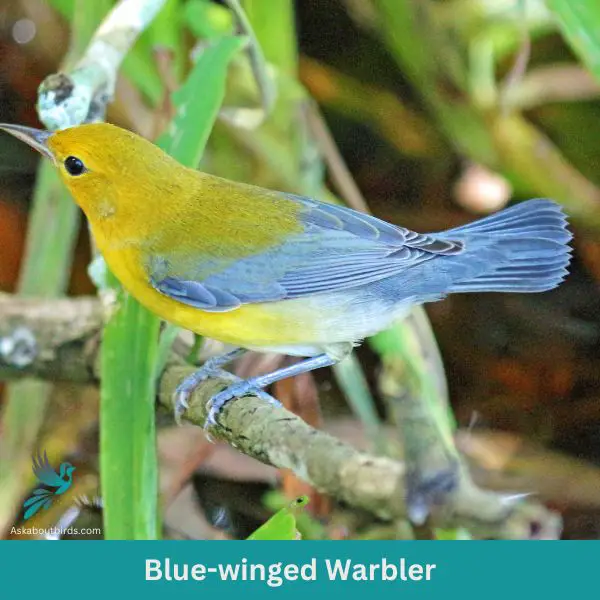
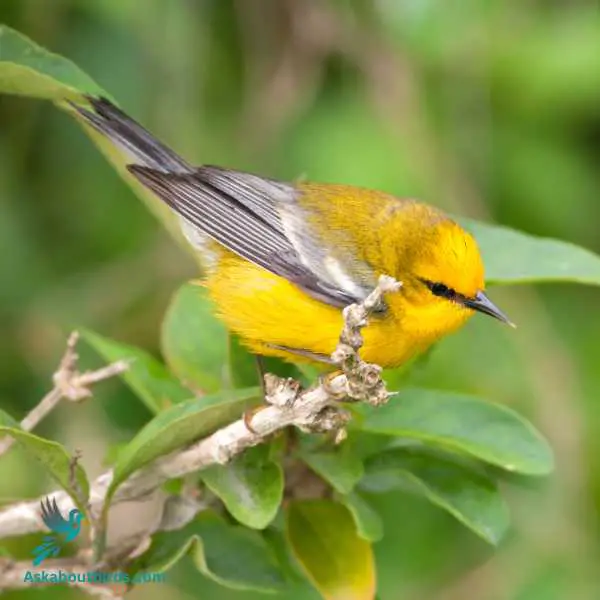
| Trait | Blue-winged Warbler |
|---|---|
| Scientific Name | Vermivora cyanoptera |
| Length | 4.3-4.7 inches |
| Wingspan | 6.7-7.5 inches |
| Weight | 0.3-0.4 ounces |
The Blue-winged Warbler is a vibrant songbird that stands out with its lemon-yellow coloring and buzzing song.
Appearance: This warbler displays a brilliant yellow body contrasted by blue-gray wings and a slim, black line through the eyes. The wings also feature two white wing bars.
Diet: The diet of the Blue-winged Warbler primarily consists of insects and spiders. They actively forage in shrubs and low trees, picking off their prey from the foliage.
Reproduction: Blue-winged Warblers build their nests on or near the ground, using grasses and other fine materials. The female lays a clutch of 4-6 eggs, which she incubates.
Belted Kingfisher

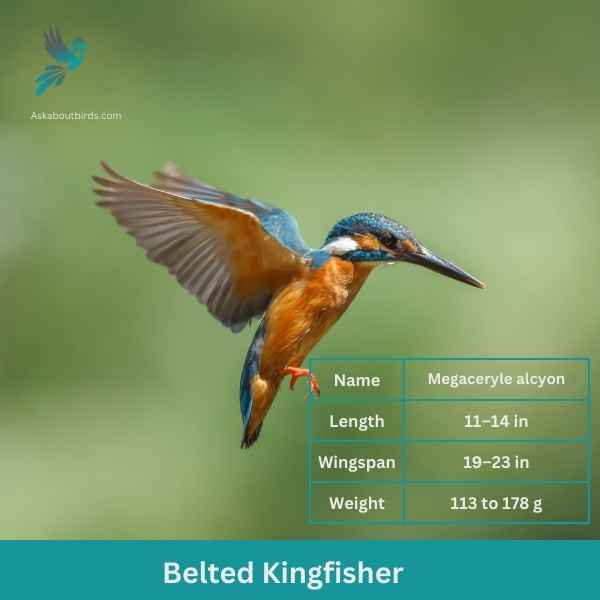
| Feature | Measurement |
|---|---|
| Scientific Name | Megaceryle alcyon |
| Length | 11–14 in |
| Wingspan | 19–23 in |
| Weight | 113 to 178 g |
The Belted Kingfisher is a distinctive and easily recognizable bird, frequently observed near water bodies, where it can be seen diving headfirst to catch prey.
Appearance: Sporting a prominent crest, the Belted Kingfisher has a slate blue-gray upper body and white underparts. Males possess a single blue band across their white chests, while females have an additional rufous band, making them one of the few bird species where females are more brightly colored than males. Their bill is long, sharp, and dagger-like.
Diet: As expert fishers, Belted Kingfishers mainly prey on small fish, but they’ll also consume crustaceans, insects, and amphibians. They’re known for their hunting tactic of hovering over water, spotting their prey, and then diving swiftly to snatch it.
Reproduction: Belted Kingfishers nest in burrows which they excavate in sandy or earthen banks, usually adjacent to water. The tunnel can be anywhere from 3 to 6 feet long, ending in a chamber. Within this chamber, the female lays a clutch of 5 to 8 white eggs.
Blue-gray Gnatcatcher
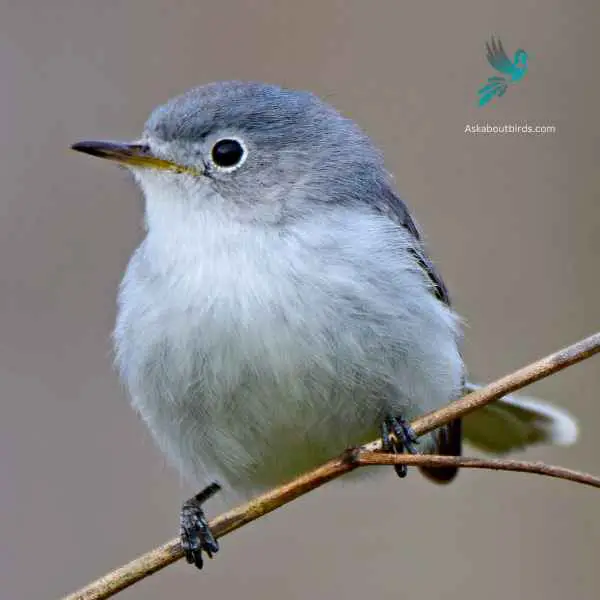
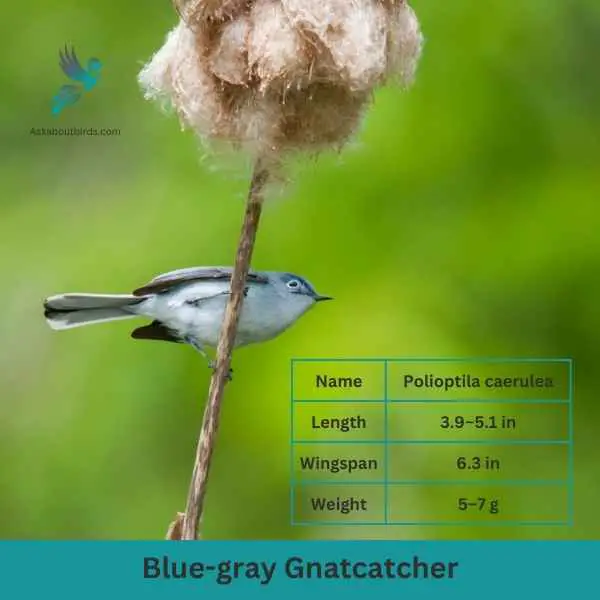
| Feature | Measurement |
|---|---|
| Scientific Name | Polioptila caerulea |
| Length | 3.9–5.1 in |
| Wingspan | 6.3 in |
| Weight | 5–7 g |
The Blue-gray Gnatcatcher is a petite, active bird, frequently observed flitting about treetops, emitting its distinctive high-pitched calls as it moves agilely through the branches.
Appearance: This bird exhibits a predominantly blue-gray plumage with a subtle white eye ring and long, slender tail feathers. The tail has distinctive black and white edging, with the males sometimes showing a faint black line on their forehead during the breeding season.
Diet: Blue-gray Gnatcatchers primarily feed on small insects and spiders. They’re adept hunters, foraging actively among foliage and even catching insects in mid-air.
Reproduction: These birds weave compact, cup-shaped nests on tree branches using plant materials, spider webs, and lichen. The exterior of the nest often matches the tree bark, making it well camouflaged. Inside, the female lays a clutch of 3 to 5 blue or greenish eggs, which she incubates.
Black-throated Blue Warbler

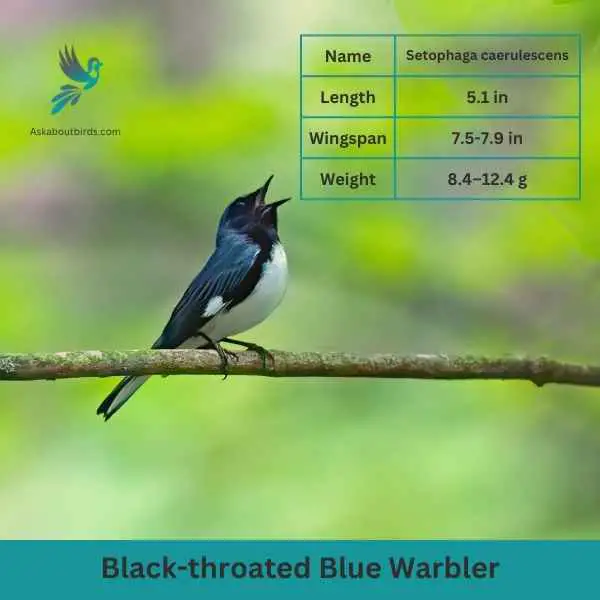
| Feature | Measurement |
|---|---|
| Scientific Name | Setophaga caerulescens |
| Length | 5.1 in |
| Wingspan | 7.5-7.9 in |
| Weight | 8.4–12.4 g |
The Black-throated Blue Warbler is a small migratory bird that breeds in the eastern United States and parts of Canada. The male Black-throated Blue Warbler displays a striking appearance with deep blue plumage on its upperparts, contrasting sharply with a black throat and a white belly. Females, on the other hand, have more muted colors, featuring grayish-olive plumage with a lighter throat.
These warblers prefer deciduous and mixed woodlands, where they forage actively for insects and spiders. They have a slender bill, which they use to extract prey from foliage and tree bark. During the breeding season, males perform courtship displays, showcasing their vibrant plumage and singing a high-pitched song to attract mates.
Black-throated Blue Warblers are known for their long-distance migration. They spend their winters in the Caribbean and Central America, where they inhabit various forested habitats. They construct cup-shaped nests in trees or shrubs, often placing them close to the ground.
Tree Swallow
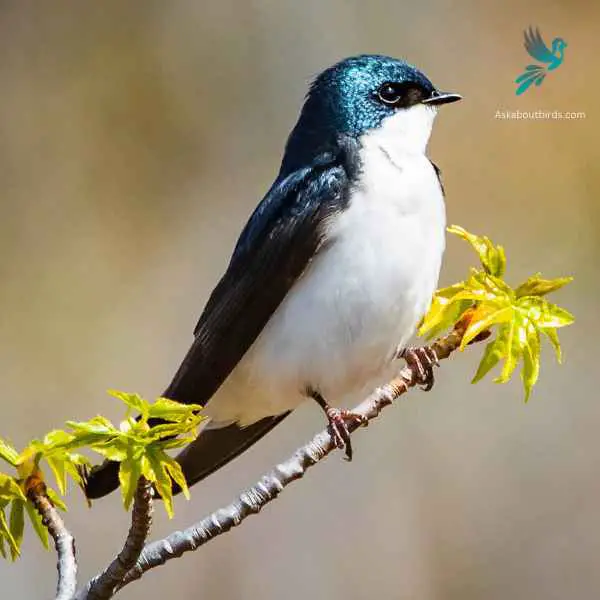
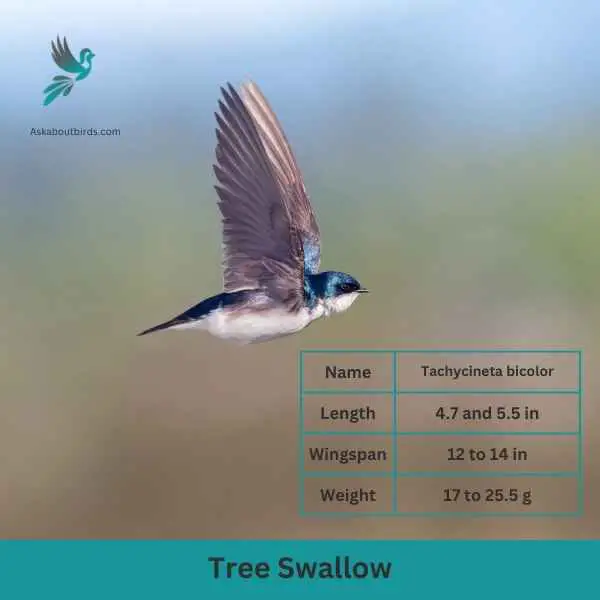
| Feature | Measurement |
|---|---|
| Scientific Name | Tachycineta bicolor |
| Length | 4.7 and 5.5 in |
| Wingspan | 12 to 14 in |
| Weight | 17 to 25.5 g |
The Tree Swallow is a graceful and agile bird, best recognized for its iridescent blue-green upperparts and sweeping flight patterns over open fields and water.
Appearance: The Tree Swallow is sleek with a streamlined body. The upperparts shine with a blue-green iridescence while the underparts are white. They possess long, pointed wings and a slightly forked tail, aiding in their agile flight.
Diet: Tree Swallows primarily feed on flying insects, skillfully catching them mid-air. During colder months when insects are scarce, they can switch to a diet of berries, particularly those of the bayberry, which other birds might find hard to digest.
Reproduction: Tree Swallows are cavity-nesters, typically choosing natural holes in trees or using bird boxes. They line their nests with feathers, creating a soft environment for the eggs. The female will lay a clutch of 4 to 7 white eggs.
Barn Swallow


| Feature | Measurement |
|---|---|
| Scientific Name | Hirundo rustica |
| Length | 6.5–7.5 in |
| Wingspan | 12.5–13.5 in |
| Weight | 16–22 g |
The Barn Swallow is a sleek, agile bird renowned for its graceful flight patterns and iconic forked tail, often seen darting over fields and water bodies in search of flying insects.
Appearance: Barn Swallows have deep blue, almost iridescent, upperparts and a rufous to tawny underbelly. Their distinctively forked tail and long wings give them a streamlined look. Both males and females have a similar appearance, though males often exhibit slightly brighter colors and a deeper fork in the tail.
Diet: Barn Swallows feed primarily on flying insects, which they catch in mid-air during their agile and acrobatic flights. Their diet includes flies, beetles, moths, and other small flying insects.
Reproduction: Barn Swallows are known for building their mud nests on man-made structures, particularly barns, bridges, and eaves. The nest is cup-shaped and made from mud pellets, often lined with feathers. The female lays a clutch of 4 to 6 eggs.
Purple Martin
| Scientific Name | Length | Wingspan | Weight |
|---|---|---|---|
| Progne subis | 7.5-8.7 in | 15.3-16.1 in | 1.6-2.1 oz |
The Purple Martin is the largest North American swallow known for its acrobatic flight and sociable behavior.
Appearance: Adult male Purple Martins have iridescent, dark blue-purple plumage overall, while females and young have a duller, grayish-brown upperparts and white underparts with a grayish chest. The wings and tail are blackish.
Diet: Purple Martins feed almost exclusively on flying insects, including dragonflies, damselflies, flies, beetles, wasps, and moths. They catch their prey in the air, often flying high and covering large distances in search of food.
Reproduction: Purple Martins are cavity-nesting birds and have come to rely on human-provided nesting structures in the eastern parts of their range. The female lays a clutch of 3 to 6 eggs, and incubates them for about 15 to 18 days. Both parents feed the young and defend the nest.
Where to Spot Kentucky’s Blue Birds
Kentucky is a paradise for bird watchers, with its diverse habitats attracting a variety of bird species. Here are the top 3-5 locations in Kentucky known for the greatest diversity of birds, including blue birds:
- Land Between the Lakes National Recreation Area: This large, protected area offers a variety of habitats, from forests to open water, making it home to a diverse range of bird species, including the Eastern Bluebird and Indigo Bunting.
- Mammoth Cave National Park: The dense forests surrounding the world’s longest cave system provide an ideal habitat for many bird species, including the Blue Grosbeak and Cerulean Warbler.
- Bernheim Forest: This arboretum and research forest offers a mix of habitats, including forests, meadows, and wetlands, which attract a wide variety of bird species, including the Eastern Bluebird and Blue Jay.
- Daniel Boone National Forest: This expansive national forest provides a variety of habitats, from dense hardwood forests to rocky cliffs, making it home to a diverse range of birds, including the Blue-gray Gnatcatcher and Blue-headed Vireo.
- John James Audubon State Park: Named after the famous ornithologist, this park offers a mix of habitats, including forests, wetlands, and open fields, attracting a wide variety of birds, including the Indigo Bunting and Blue-winged Warbler.
| Neighboring States | Top Spots for Blue Birds |
|---|---|
| Illinois’s Blue birds | 1. Shawnee National Forest 2. Montrose Point Bird Sanctuary 3. Cache River State Natural Area |
| Indiana’s Blue birds | 1. Brown County State Park 2. Eagle Creek Park 3. Goose Pond Fish & Wildlife Area |
| Ohio’s Blue birds | 1. Cuyahoga Valley National Park 2. Magee Marsh Wildlife Area 3. Ottawa National Wildlife Refuge |
| West Virginia’s Blue birds | 1. Canaan Valley National Wildlife Refuge 2. New River Gorge National Park and Preserve 3. Bechtel Summit Reserve |
| Virginia’s Blue birds | 1. Shenandoah National Park 2. Great Dismal Swamp National Wildlife Refuge 3. Chincoteague National Wildlife Refuge |
| Tennessee’s Blue birds | 1. Great Smoky Mountains National Park 2. Radnor Lake State Park 3. Reelfoot Lake State Park |
| Missouri’s Blue birds | 1. Ozark National Scenic Riverways 2. Mark Twain National Forest 3. Squaw Creek National Wildlife Refuge |
FAQs on Blue Bird Species Found in Kentucky
What is the preferred habitat of Eastern Bluebirds?
Eastern Bluebirds prefer open areas with scattered trees, as these provide ideal conditions for both nesting and feeding. They are commonly found in farmlands, orchards, suburban areas, and along the edges of woods. Providing nest boxes in these areas can help attract Eastern Bluebirds as natural cavities are often scarce. It’s important to place the nest boxes in areas with low vegetation to help protect them from predators. Additionally, they prefer areas where insect populations are abundant as insects make up a large part of their diet.
What is the significance of the Indigo Bunting range map?
The Indigo Bunting range map is crucial for birdwatchers and conservationists. It shows the regions where these blue beauties, known for their bright blue-colored birds and dark wings, are usually found throughout the whole year round. In the early spring, they will migrate south and north from Central America and the Caribbean to breed in the eastern half of the United States and parts of Canada. In the fall, they head south again to spend the winter in warmer climates. Range maps help in the conservation efforts of this species by identifying the areas that need to be protected and where to place bird feeders to attract them.
What is the best way to feed Northern Parulas?
Northern Parulas are small birds with a blue-gray head, a yellow throat patched with a dark semi-circle, and two white wing bars. They are usually found in forests, particularly near water. If you want to attract Northern Parulas, it’s essential to provide your bird feeder with the right kind of food. While they primarily eat insects, during winter, they might also consume berries and sunflower seeds. Therefore, providing a variety of foods, such as live mealworms which are bluebird’s special favorite, raisins soaked in hot water, and small sunflower seeds can help attract them. Also, provide fresh water in a shallow bird bath, as it will help them stay hydrated and keep their feathers clean. Remember, Northern Parulas and most other birds need a balanced diet to stay healthy, so it’s crucial to provide a variety of foods year-round.
Why don’t I see Barn Swallows in winter?
Barn Swallows migrate to South America during the winter months. This is a common behavior among many bird species, as they move to warmer regions where food is more abundant. The barn swallow range map will show that they are found throughout North America and as far south as Argentina during the breeding season. However, as the days start getting shorter and colder, they will begin their migration journey south. This usually occurs in late summer or early fall. During this time, they will cover vast distances, sometimes flying up to 600 miles in a single day!
